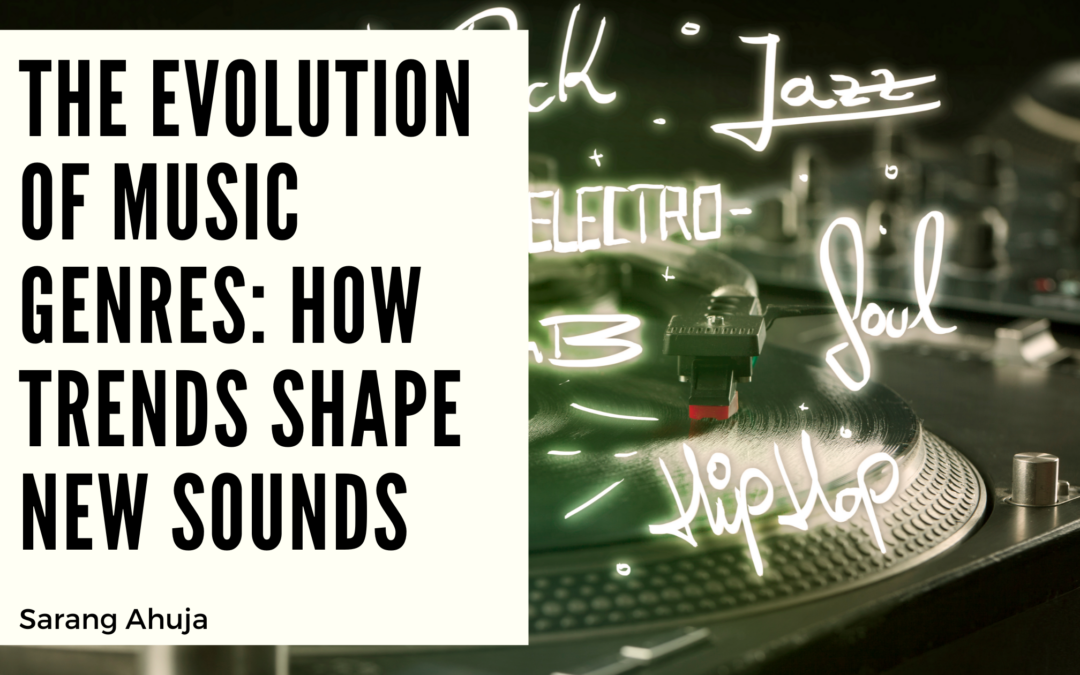Music has always been a reflection of society, evolving with the times and adapting to cultural shifts. From classical compositions to modern-day electronic beats, the transformation of music genres is a testament to the dynamic nature of human expression. Over the decades, various influences, such as technology, social movements, and even fashion, have played a role in shaping the evolution of music genres. Understanding how trends influence these changes offers insight into the constantly evolving soundscape we experience today.
One of the most significant factors in the evolution of music genres is technological advancement. The invention of the phonograph and the radio in the early 20th century allowed music to reach larger audiences, promoting the spread of jazz, blues, and rock ‘n’ roll. Similarly, the development of digital recording and music production software revolutionized the way artists create music. With the rise of synthesizers and drum machines in the 1980s, electronic music began to take center stage, leading to the birth of genres like house, techno, and synth-pop. Today, software like Ableton Live and FL Studio enable producers to experiment with endless sonic possibilities, giving rise to new sub-genres like lo-fi, vaporwave, and hyperpop.
Cultural and social movements also play a significant role in shaping the sound of an era. In the 1960s, for example, the civil rights movement in the U.S. heavily influenced the development of soul and funk music, with artists like James Brown and Aretha Franklin becoming voices for social justice. In the 1990s, the rise of hip-hop culture in urban centers gave birth to a genre that combined rhythm and poetry, addressing issues such as inequality, systemic racism, and life in marginalized communities. Hip-hop quickly evolved, spreading globally and blending with other genres, which led to the development of trap, drill, and grime.
Another factor contributing to the evolution of genres is the blending and fusion of styles. Globalization has played a significant role in this, allowing music from different cultures to cross borders and influence one another. Latin music, for instance, has gained significant global popularity in recent years, with reggaeton, a genre that originated in Puerto Rico, dominating international charts. Artists like Bad Bunny and J Balvin have introduced Latin rhythms to wider audiences, blending them with pop and hip-hop elements to create new sub-genres. Similarly, the rise of K-pop, with its fusion of hip-hop, electronic, and traditional Korean sounds, has captivated listeners worldwide.
The digital age, with its emphasis on sharing and discovery, has also democratized music consumption and creation. Platforms like SoundCloud and Bandcamp have given independent artists the ability to reach global audiences, fostering the growth of niche genres and scenes. With music becoming more accessible, listeners are exposed to diverse styles, leading to an era of genre fluidity. It’s not uncommon for modern artists to blend elements from rock, electronic, hip-hop, and jazz in a single track, challenging the boundaries of what defines a genre.
In conclusion, the evolution of music genres is a complex process shaped by technology, culture, and social change. As society continues to progress and innovate, so too will the music that reflects it, ensuring that the sound of tomorrow is always fresh, unpredictable, and deeply connected to the world we live in.

